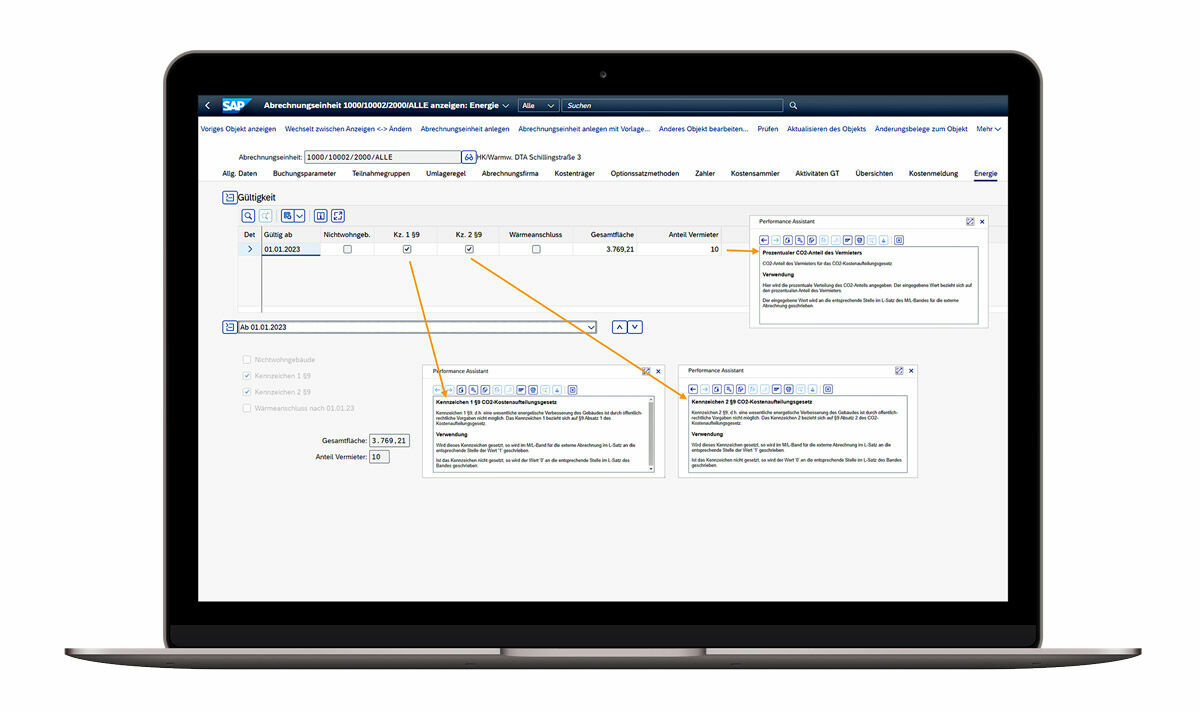No more difficult manual work – PROMOS digitalises steps for CO2 emission cost allocation
Growing demands & increasing workload – here’s what needs to be done now!
The purpose of the CO2 Cost Allocation Act is for CO2 emission costs incurred in connection with the supply of district heating, oil, natural gas and other fuels to rental properties to be allocated according to the polluter-pays principle. The more climate-friendly the house is built, the greater the share to be borne by the tenant. The aim of the legislator is to promote the climate neutrality of buildings.
Over the past two years, the demands on landlords in the area of utility cost management have increased exponentially. From the remote reading of meters to the provision of consumption data to tenants throughout the year, property managers are gradually being faced with more and more tasks. Improvisation is taking place in many areas and manual interfaces are constantly increasing. Is it time to strategically position yourself for the future? As an IT system company, our task is to support you in both minor and major issues depending on your processes. We would therefore like to give you the opportunity to work with us to sketch the outlines of a global picture of your utility cost management. At the same time, we will provide you with specific assistance to smoothly transfer the CO2 costs to your billing service provider or to your billing software (e.g. from PROMOS).
A solution for process optimisers and climate enthusiasts
Many landlords are still struggling with manual processes in utility cost management. When the invoices from energy suppliers arrive, some companies are forced to transfer the data on the reported CO2 costs to the billing service provider manually, using an Excel spreadsheet or entering it into an online portal, due to the lack of digital infrastructure. To prevent this, the first step is to create the option of storing the relevant data in your SAP® system. Once set up, users of the PROMOS Utilities Cockpit (NKPU) have corresponding fields for recording the CO2 emission costs broken down by fuel type. Transmission to the billing service provider can take place seamlessly and digitally via the newly created data record formats as part of the transmission of all other consumption data. Your employees are thus spared an important manual step in the billing process. But what are the other advantages of including CO2 data in your SAP® system? Our aim is to provide a comprehensive carbon footprint for your housing company that forms a sound basis for investment decisions regarding your buildings. The resulting refurbishments have a direct influence on the amount and the extent of distribution of CO2 costs. In view of the prospective increase in CO2 emission costs, you achieve several goals at once; you reduce your carbon footprint, get closer to the goal of climate neutrality for your buildings and reduce your costs at the same time.

Once set up, the settlement unit contains corresponding SAP® information on CO2 emission cost allocation.
Next steps
After setting up a storage option for recording CO2 cost data in your SAP® system, the next step is to automatically process incoming invoices from your energy suppliers. Specialised OCR software is used to automatically read the necessary fields from the digitised invoices and process the required data in SAP®. This also eliminates the last additional work step.
No more compromises!
As an experienced IT service provider, we are able to implement the new requirements in your system in a suitable way even at short notice. However, in numerous discussions with customers, we have realised that the problem often lies elsewhere. There is a lack of a solution that consistently digitalises the entire utility cost management process, standardises incoming formats and digitally connects all stakeholder groups. Take the opportunity to work with us to define a roadmap of what your future IT landscape should look like and which components it should contain. With a multifunctional utility cost platform, we are able to connect a wide variety of players and provide you with a central monitoring and control cockpit for all processes relating to your utility cost management. We look forward to working with you to set the course for a successful future.
Further information:
- Utility Cost Management
- Portfolio for the PROMOS service partner platform
- Portfolio for the PROMOS meter reading service interface
- Portfolio for the PROMOS solution for the EED
- Article "Revolution in the billing process – PROMOS initiates an open platform for utilities cost management with SAP®"
- PROMOS News "Ready for activation – the PROMOS EED/consumption data solution has you prepared for everything"
- PROMOS News "Fresh look-and-feel – Video demonstrates the new consumption display in the easysquare tenant app"

